Pepper plants are a popular choice for many home gardeners, providing a bountiful harvest of colorful and flavorful fruits.
As with any plant, they can experience problems - one of them being black joints.
In this article, we'll explore the symptoms, reasons, and solutions for black joints on your pepper plants.

Are Pepper Plants Supposed to Have Black Joints?
Black spots are normal and can frequently emerge on different sections of the stems or around the joints of certain pepper species.
This phenomenon is particularly noticeable in bell peppers and jalapeños, two of the most prevalent types of peppers.
The emergence of black or dark purple spots on the stem is often attributed to a plant's reaction to stressors, such as abrupt shifts in temperature.
It's usually not a cause of concern if the black color is not to prominent and is not affecting the plant's growth.
However, if you need to check your plant thoroughly and observe as black joints on pepper plants can also be a sign of disease.
There are a few potential reasons for this issue, including fungal infections like anthracnose, and infestations by pests such as aphids.
To help you determine the cause of black joints and implement the right solution, here are various signs and symptoms, along with their underlying causes.
We'll provide recommendations on how to fix these issues.
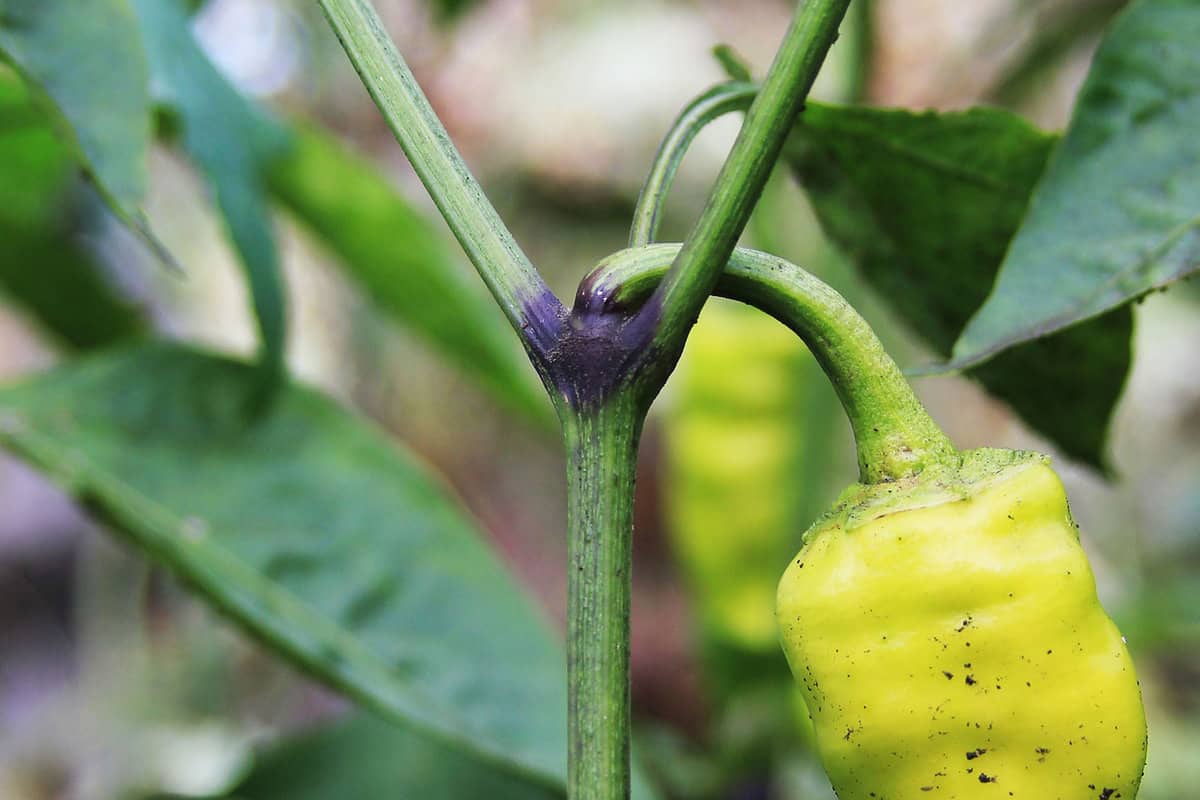
Possible Causes of Black Joints in Pepper Plants
Black joints can be caused by various factors, such as pests, diseases, and environmental stresses. Let's look into some of them.
Aphids
Aphids are tiny insects that can be a common culprit for black joints on pepper plants.
These pests feed on plant sap, causing damage to leaves and stems, which can lead to blackened joints.
Squishing them without damaging the leaves or applying soapy water to the undersides of the leaves might help reduce their population.
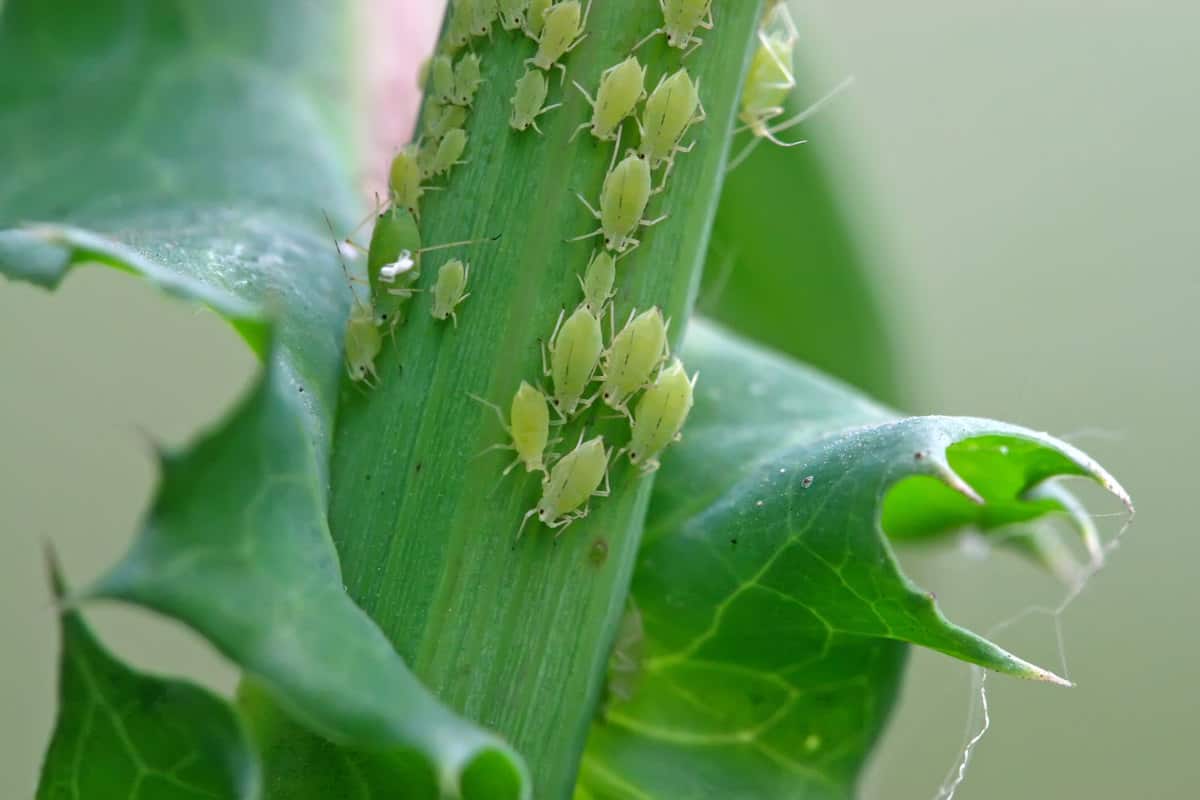
Bacterial Leaf Spot
Another possible reason for black joints on your pepper plants is bacterial leaf spot, a disease caused by the bacterium Xanthomonas campestris pv. vesicatoria.
The initial symptoms include small, circular, water-soaked spots on leaves, stems, and other plant parts
As the disease progresses, the spots can turn black, leading to blackened joints.
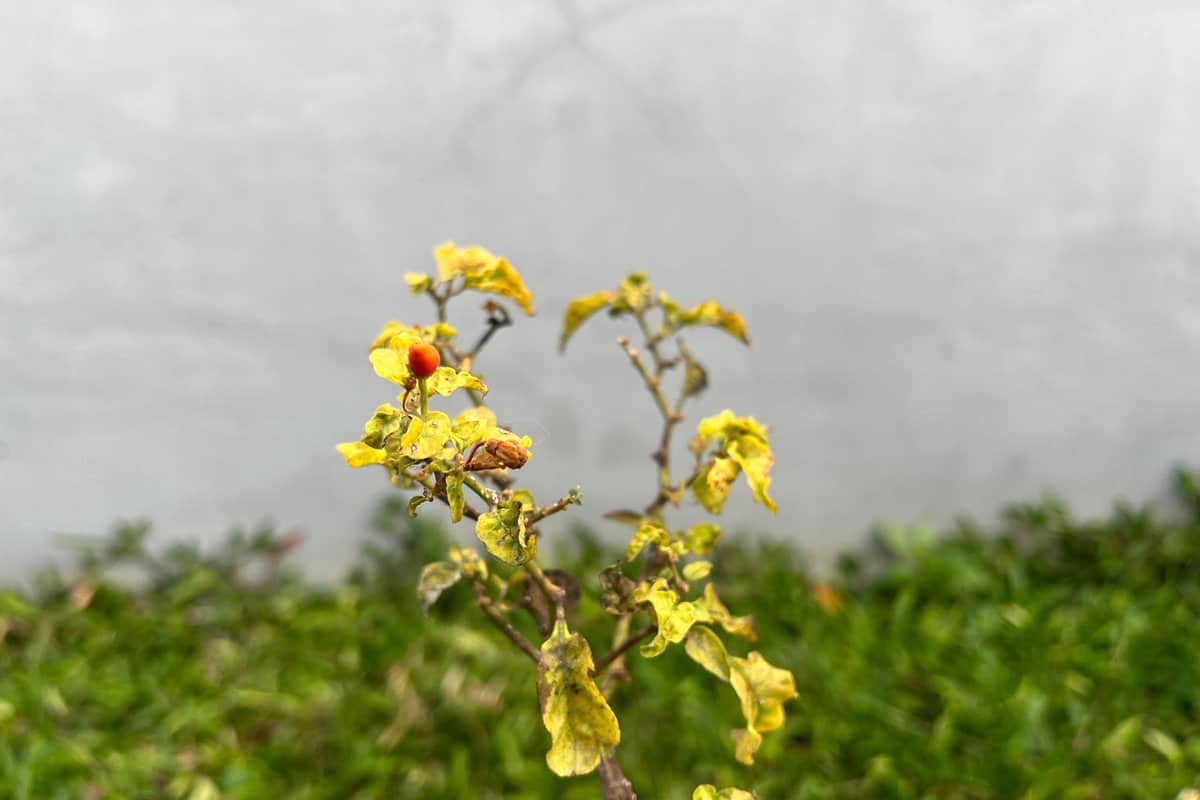
Environmental Stress
Environmental stresses such as improper watering, extreme temperatures, and nutrient deficiencies can also lead to black joints on your pepper plants.
To avoid these stresses, be sure to provide your plants with appropriate amounts of water, maintain a temperature range of 70-80°F, and ensure adequate nutrition levels.
Symptoms of Black Joints

In this section, we'll discuss the symptoms to look for when dealing with black joints in your pepper plants.
Keep an eye on your plants and look out for the following signs.
Sudden Wilting
You might notice that the leaves of your pepper plants suddenly start to wilt, even though they appeared healthy just a day or two before.
This can be a clear indicator of an issue with the plant's joints.
The wilting might be isolated to specific areas of the plant, or it could affect the entire plant. It's important to address the problem quickly to prevent further damage.
Stunted Growth
Black joints in peppers can also lead to stunted growth. If you notice that your pepper plants aren't growing as well or as quickly as they should, this could be a sign of trouble.
Check the joints of the plant stems to see if they appear black or dark brown.
If this is the case, your plants might be suffering from a problem related to black joints, which could hinder their overall growth and development.
Quick Fixes for Black Joints
Here's how to fix your pepper plants once it starts showing symptoms of diseases that could be related to black joints.
Appropriate Watering

To maintain healthy pepper plants, it is essential to provide them with the right amount of water.
Overwatering can lead to root rot, while under-watering can cause the plant to wilt.
Consistently damp soil is ideal for preventing the development of black joints.
A good practice is to water your plants deeply but less frequently, ensuring they receive about 1-1.5 inches of water per week.
This will help maintain optimum soil moisture and prevent the occurrence of black joints.
Proper Fertilization
Ensuring your pepper plants receive proper nutrition is essential in preventing black joints.
A well-balanced fertilizer, containing essential macronutrients such as nitrogen, phosphorus, and potassium, can promote healthy plant growth.
In addition to these macronutrients, micronutrients like magnesium, calcium, and iron are also necessary for the healthy growth of your plants.
Be cautious not to over-fertilize, as this can lead to an excess of nutrients, causing further issues.
Follow the recommended dosage mentioned on the fertilizer label to maintain a healthy balance.
Use of Pesticides
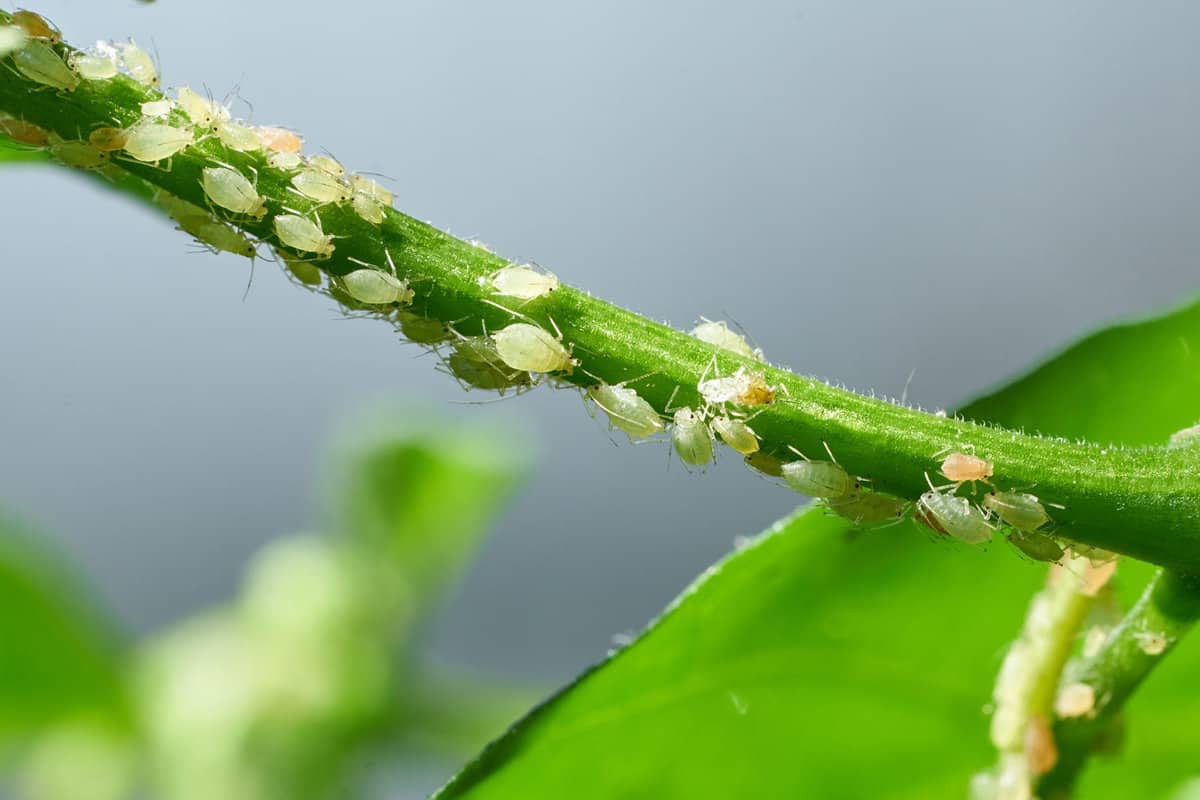
Pests like aphids can be a major cause of black joints in pepper plants. These small insects suck sap from the plants, leaving behind a residue called honeydew, which leads to the growth of sooty mold.
This mold causes the blackening of pepper joints. To tackle this issue, implement a pest management strategy involving the use of pesticides.
Opt for organic pesticides like neem oil or insecticidal soap, which are safe alternatives and less harmful to the environment.
Also, be sure to follow the recommended application instructions for these pesticides to ensure the effective control of pests without harming your plants.
Preventive Measures for Black Joints in Pepper Plants
Taking preventive measures to maintain the health of your pepper plants can help reduce the chances of developing black joints.
Here are some important steps you can follow.
Regular Pruning
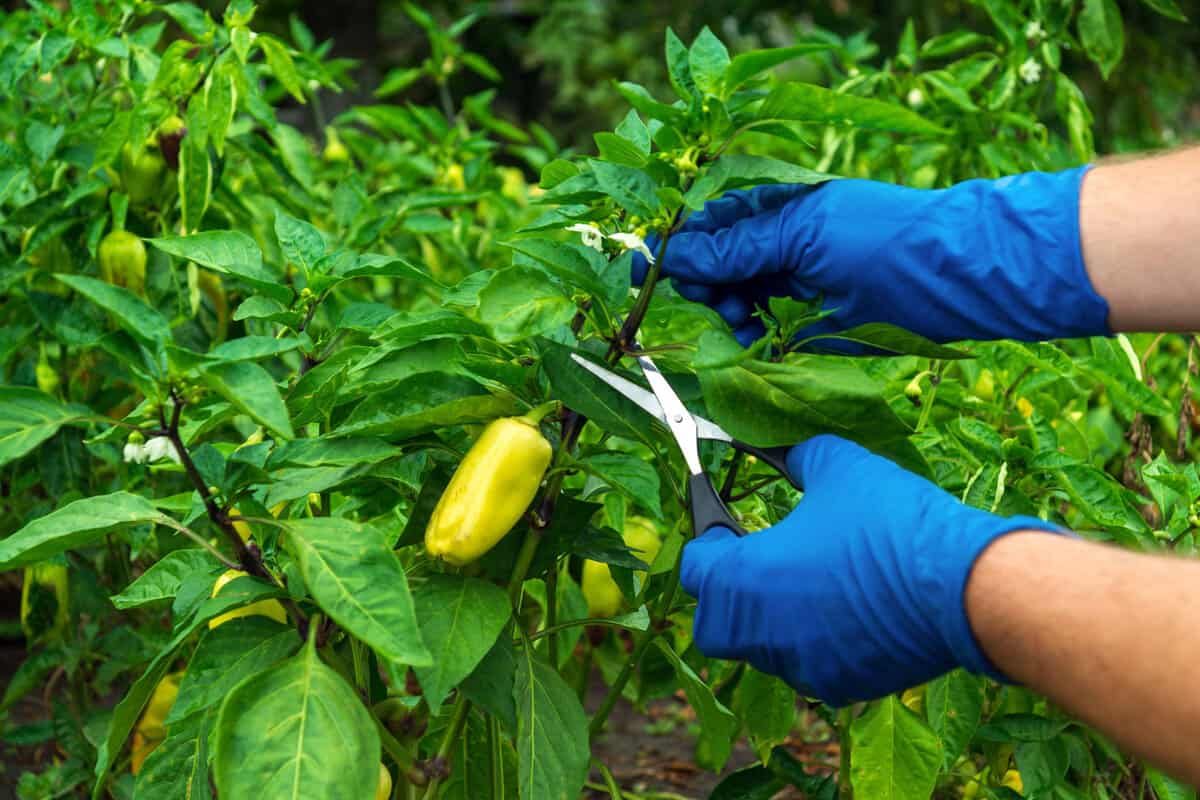
Regular pruning allows your plants to maintain a healthy growth habit.
By removing weak, damaged, or diseased parts of the plant, you'll improve air circulation and limit the areas where diseases can develop.
Remember to use clean, sharp tools to make precise cuts, and always disinfect your tools between cuts to avoid spreading diseases.
Check out this 3-pack gardening shears on Amazon.
Crop Rotation
Crop rotation is an essential part of maintaining healthy soil, as it can break the life cycle of some plant pathogens and pests.
By rotating crops every 2-3 years, you can reduce the buildup of diseases, like bacterial leaf spot, and pests, like pepper maggot, in the soil.
Make sure to rotate your pepper plants with unrelated crops to help maintain soil health.
Adequate Spacing
Providing your pepper plants with adequate spacing is crucial for reducing the risk of disease, as it improves air circulation and sunlight penetration.
Proper spacing allows your plants to dry faster after rain or watering, limiting the growth of fungal diseases.
It also helps lower the chances of pest infestations as they are more likely to spread between overcrowded plants.
Make sure to follow the recommended spacing guidelines for your pepper plant variety, typically around 18 to 24 inches apart.
Prune, Fertilize, and Proper Watering
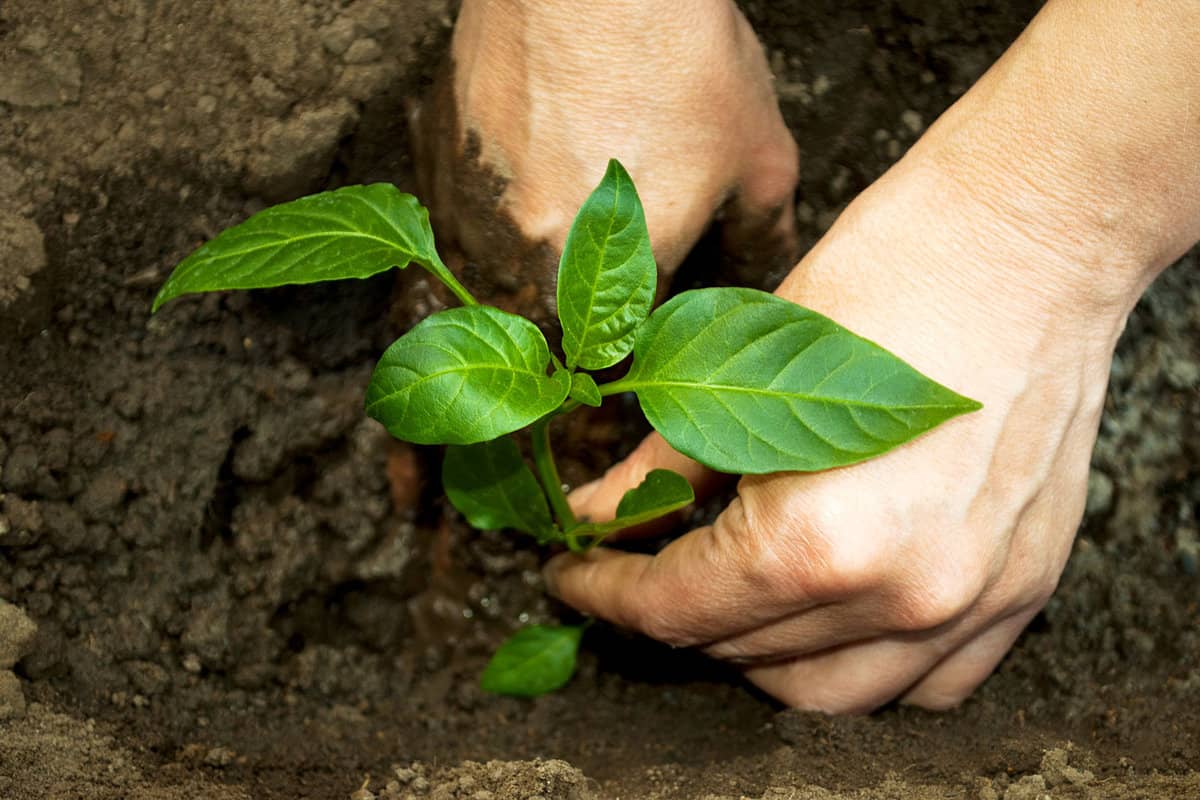
By now, you're well-equipped to understand and tackle the issue of black joints on your pepper plants.
To maintain the health of your pepper plants, make sure to inspect them regularly for signs of issues.
One important aspect of preventing and managing black joints in your pepper plants is proper garden care. Healthy plants are more resilient to diseases and pests.
Therefore, remember to water, fertilize, and prune your pepper plants as needed to keep them in optimal condition.
For more tips on growing pepper plants, check out these other articles below:
The TikTok Video That Will Have You Planting Bell Peppers Like Crazy!

